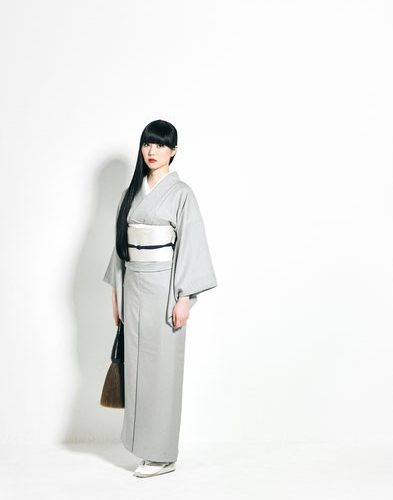Close
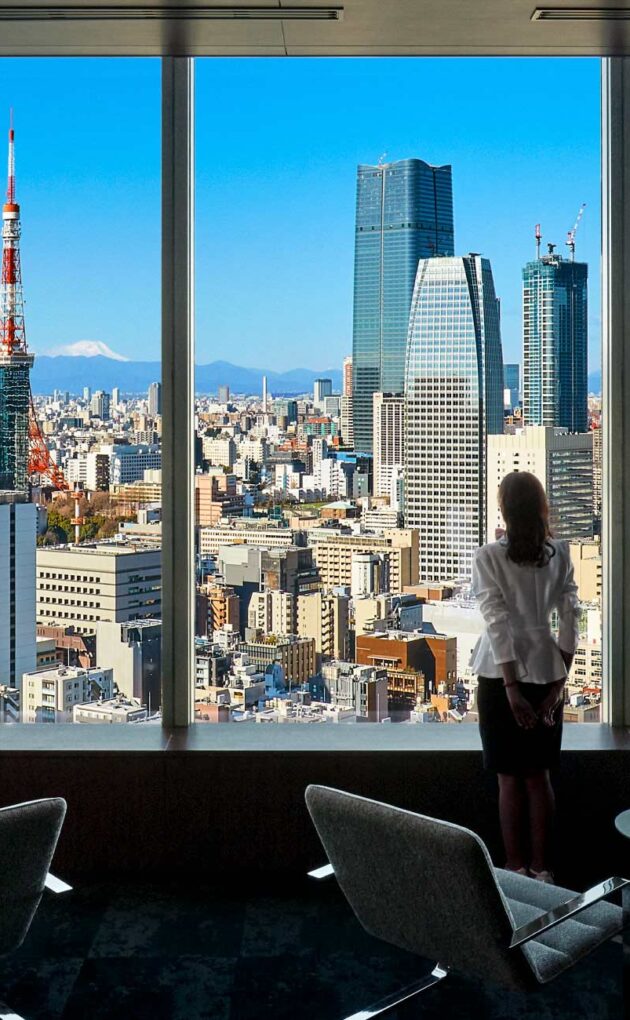
Based on the concept of “Infinite time and space amid cognizant Japanese beauty”, Park Hotel Tokyo has created a set of themes known as ART (Atrium, Restaurant, and Travel) and incorporated art, allowing guests to experience Japanese aesthetics in the context of each of these themes.
Japanese restaurant Hanasansho, a fusion of Japanese and modern styles, attempts to collaborate the « beauty of food » and the « beauty of necessaries ».
Since ancient times, Japan has been a country rich in nature and has sharply reflected the changes of seasons, such as the changing nature landscapes, plants, festivals, traditional arts, and culture. Along with an appreciation of beauty, enjoyment, and severity of the changing seasons, the Japanese people have respected the blessings of nature. With this spirit, Hanasanshou embodies the collaboration of « food » and » necessaries. »
An installation of objects, vessels, and calligraphy by an up-and-coming ceramist and calligrapher active in Japan and abroad, the arrangement is for the guests to experience the Japanese sense of beauty.
We sincerely welcome all guests with our seasonal hospitality.

Gentaro Yokoyama
Moved to the U.S. at the age of 15. He first encountered ceramics at his high school and went on to study at the Hartford Art Institute. After graduation, he worked at a local pottery factory before returning to Japan in 2002. Since then, he has set up a studio in Monzennaka-cho and has exhibited his works at galleries in Japan and abroad, including Ginza Mitsukoshi. He has participated in exhibitions for Hanae Mori and the manga “Heugemono”. His works are now available at the Mori Museum Shop.
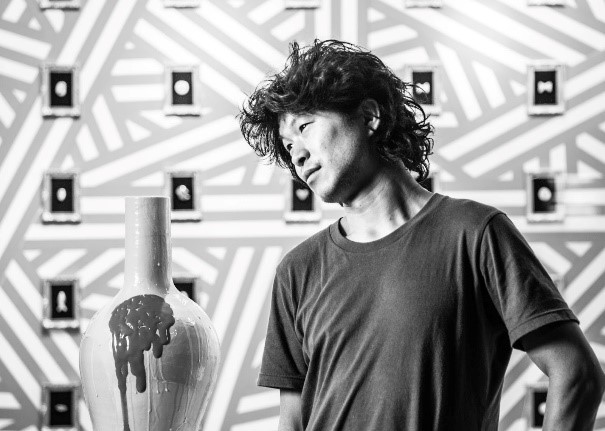
SHOWKO
SHOWKO was born into a family of potters who have, for some 330 years, produced Makuzu porcelain wares for use in tea ceremony. After completing extensive training in Saga Prefecture, she returned to her hometown of Kyoto to establish her own studio in 2005, thus beginning her career as a ceramic painting artist, one who uses distinctive techniques to produce unique works of art. Over time, SHOWKO began further exploring the possibilities of ceramics while drawing upon her experience as a graphic designer. In 2009, she incorporated her studio and launched a brand SIONE. In 2016, SIONE opened its first company store in the neighborhood of Ginkakuji in Kyoto. Through its ceramic paintings and other artwork, SIONE creates moments and spaces filled with warm hospitality, spreading this sentiment while expanding its activities throughout Japan and as far afield as China, Taiwan, Paris, Milan and beyond.
We view ceramics as “letters to the future,” something tangible that will remain long after we are gone. Brought into existence through repeated glazing and firing, these works of art bring together straight lines and curved lines, classic and modern, night and day.
It is our hope that these works, passed down through generations from ancient times to the distant future like the “Song of Life” itself, with all its ephemeral beauty, will bring good things to the lives of all who happen to touch them.
-SIONE
Storytelling Pottery & Other “Readable” Products. Rethinking the meaning of the “spirit” of the traditional culture that grew around tea ceremony, SIONE ceramics give “form” to this spirit while telling stories along the way. Like the lingering feeling that one has after reading the last page of a novel, like the elation that one feels when one puts on a very special outfit. SIONE ceramics serve as a switch that transforms everyday life into something extraordinary.
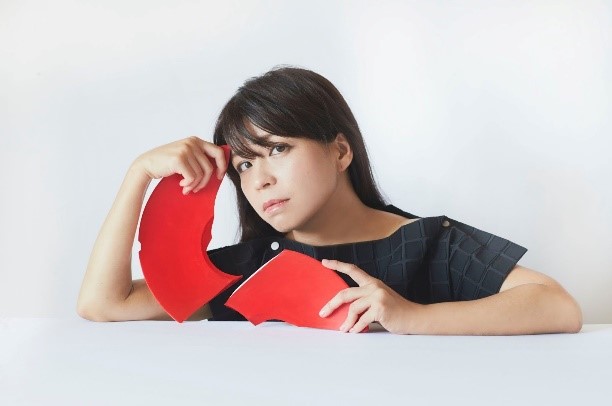
Ryota Shioya
2003 Graduated from Ceramic course in Department of Craft at Tama Art University
2005 Completed graduate studies in the Plastic Arts and Mixed Media course in the art studies at University of Tsukuba
2011-2012 Japanese Government Overseas Study Programme for Artists / The Florence Academy of Fine Arts
2020.8 Solo Exhibition “formlessness doesn’t exist without form” Seto City Art Museum, Seto, Aichi
2022.1 Solo Exhibition “formlessness doesn’t exist without form” cont, Nagoya, Aichi
He evokes various memories and emotions in the audience through « form » and mechanism of making thing. Through the form and mechanism associated with pottery, the work evokes various memories and emotions in the viewer. The « mechanism » becomes something more than a mere structure through the process of creation. In recent years, based on the premise that space is perceivable through the movement of people, he has attempted to create works with a reality of « figure » and « appearance » of things and people, inspired by this « movement ».
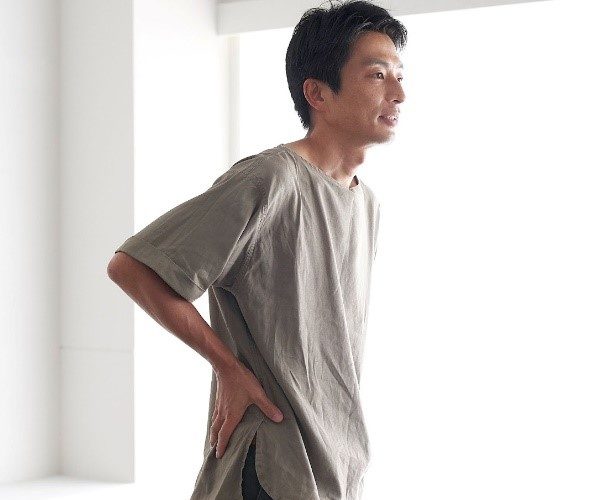
The Private room of Japanease restaurant Hanasanshou on the 25th floor was also decorated by artwork, with a painting by the artist Calligrapher MAMI.
“Iroha”, a traditional Japanese poem that has been popular since ancient times, is expressed as a wisteria trellis using letters. Wisteria trellises are in places where people gather and relax.
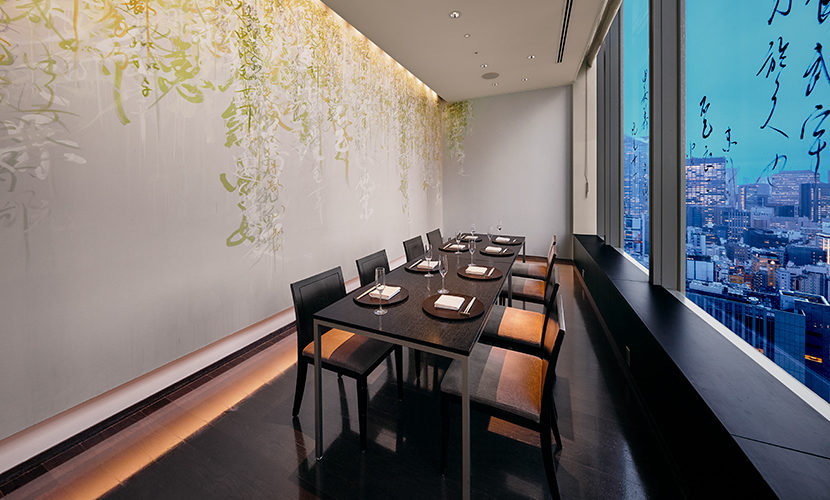
Mami / MAMIMOZI
Mami picked up the brush at the early age of nine.
Fusing the visual language of graffitti, a product of Hip Hop culture, and traditional calligraphy, Mami has established her own sense of style – ‘Calligraf2ity.’
Through her solo exhibitions and performances, her unique expression has circled the globe, starting from Japan and extending to other parts of Asia, and to Europe, America, Africa, and Australia. Currently, she is located in her native Japan, in Tokyo, while she travels the world to share her distinctive style.
